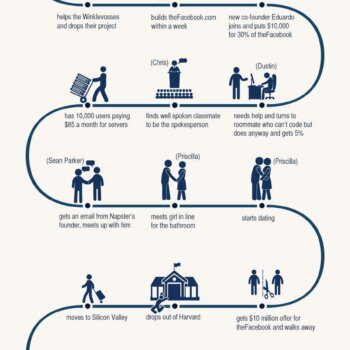Too many people, when faced with clients who range from dissatisfied to downright angry, choose the loser’s path by postponing handling the situation. Worse yet, they handle it inappropriately. Postponement doesn’t make the problem go away. It results in one of two things happening.
Either the angry client decides the problem isn’t worth the aggravation and cools down. Or, the client gets so angry that the next time you hear from him or her is through some sort of official (and possibly legal) letter. Worse yet, you’ll see your company named on the local news channel in one of those consumer protection segments.
If you’re the business owner, you may think it’s ok to lose one client who’s unhappy, but it’s not. You see when we have a good experience with a company, we tend to tell 3 other people about it. Positive word-of-mouth is great for business. However, someone who is displeased with a situation tells, on average, 11 people about it. Can you see how your business could be hurt by that? And, there’s an even bigger risk, if you are a small businessperson or sole proprietor. You may learn more about your client’s anger through legal channels.
Naturally, no one wants to walk into a lion’s den and face the angry client. However, you must consider the value of this client to you, your reputation, and the company. In most cases, I would guess that it will be worth your while to face that angry customer and get the situation resolved as quickly as possible.
I’d like to give you nine steps I’ve developed for facing and dispelling another person’s anger. They work well in most situations mainly because you’re giving the client the attention to their dissatisfaction deserves.
1.Acknowledge the other person’s anger quickly. Nothing adds more fuel to a fire than having his or her anger ignored or belittled. The faster you verbally recognize their anger, the better.
- Make it plain that you’re concerned. Tell them you realize just how angry they are. Let them know that you are taking the situation seriously. Make notes of every possible detail they give you.
- Don’t hurry them. Be patient. Let them get it all out. Never try to interrupt or shut them up. In many cases, the best move is to simply listen. They’ll wind themselves down eventually. In some cases, they’ll realize they blew the situation out of proportion and feel foolish for it. They are then likely to accept nearly any solution you offer.
- Keep calm. Most angry people say things they don’t really mean. Learn to let those things pass and take them up after you’ve solved the present challenge — only if you feel it’s necessary to do so.
- Ask questions. Your aim is to discover the specific things that you can do to correct the problem. Try to get specific information about the difficulties the problem has caused, rather than a general venting of hot air.
- Get them talking about solutions. This is where you will learn just how reasonable this client is. By the time you get to this step, their anger should have cooled enough to discuss the challenge rationally. If it hasn’t, tell them you want to schedule a later meeting, even if it’s in an hour, to come up with some reasonable solutions. Let them do the rest of their fuming on their time.
- Agree on a solution. After you know exactly what the challenge is, you’re in a position to look for some kind of action that will relieve the challenge. Propose something specific. Start with whatever will bring them the best and quickest relief. Don’t get into a controversy over pennies at this time.
- Agree on a schedule. Once you’ve agreed on a solution, set up a schedule for its accomplishment. Agree to a realistic time frame that you know you can handle. The biggest mistake you can make is to agree to something that cannot be done. If you do, you’d better be ready to face another bout of this person’s anger when you don’t come through.
- Meet your schedule. Give this schedule top priority. You’ve talked yourself into a second chance with this client, so make sure you don’t blow it.
Once you’ve satisfied the client with regard to this situation, you will have earned another opportunity to serve their needs in the future…and the needs of those they’ll tell about how well you handled it.
___________________________________________
About the Author
This article was written by Tom Hopkins himself; the author of “How to Master the Art of Selling™,” which has sold over 1.4 million copies worldwide. He has also authored 13 other books on sales and selling strategies, including “Selling for Dummies”.
If you have taken away few valuables tips from him, catch him LIVE in person at the National Achievers Congress 2016 Malaysia. Seize this opportunity to learn from this legendary master at sales.
The Asian Entrepreneur is the Strategic Partner for National Achievers Congress 2016.
Redeem your complimentary ticket here: www.nacmalaysia.com/tae






























